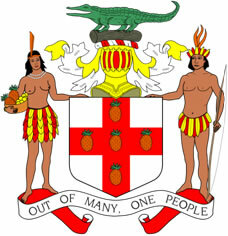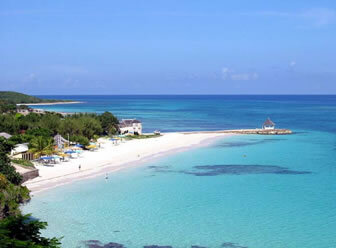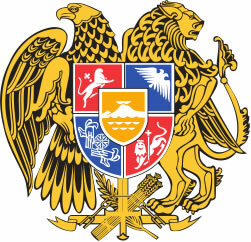Located in Central America, close to Cuba and the Cayman Islands, and considered the third largest island in the Caribbean, Jamaica has no land border with any country.
Jamaica is a former British colony whose independence was gained in 1962. Currently, the country is part of the British Commonwealth (an organization formed by the United Kingdom and its former colonies).
As a result of the large amount of slaves brought to Jamaican territory during the colonial period, currently, around 90% of the national population is descended from African slaves. This aspect directly influences the local culture, with cultural manifestations such as capoeira (fight and dance), reggae (musical style) and Rastafari (religious doctrine that preaches the overcoming of oppression against blacks and considers Ethiopia, a country in Africa, its nation sacred).

Jamaica Coat of Arms
Jamaica does not have a developed economy. Agriculture is one of the main economic activities in the country, with a focus on the cultivation of various products, such as: sugar cane, cocoa, coffee, corn, cassava, banana, tobacco and miscellaneous fruits. The Jamaican industrial sector is represented by the food, fabric, cement and agricultural machinery industries. Another highlight is found in mining, whose main product is bauxite, a fact that characterizes the country as the fourth largest producer in the world, directly reflecting on the activity related to the export.
Tourism also plays an important role, as the country attracts millions of visitors due to its beautiful beaches. This great tourist potential provided investments in infrastructure (hotels, transport system, communication, etc.) aimed at satisfying visitors.

Jamaican coastline
Jamaica data:
Territorial extension: 10,990 km²
Location: Central America
Capital: Kingston
Tropical weather
Government: Parliamentary Monarchy
Administrative division: 13 parishes
Language: English (official)
Religion: Christianity - 84% (no affiliation - 39.1%, Protestants - 28.5%, others - 16.4%), Spiritism - 10.1%, no religion and atheism - 4.1%, others - 1 .8%)
Population: 2,718,763 inhabitants (Men: 1,330,603; Women: 1,388,160)
Ethnic composition: African Americans - 75%, Eurafricans - 13%, Indians - 1%, others - 11%
Demographic density: 247 inhab./km²
Average annual population growth rate: 0.4%
Population residing in urban areas: 53.48%
Population residing in rural areas: 46.52%
Illiteracy: 14%
Undernourished population: 5%
Life expectancy at birth: 72.3 years
Households with access to drinking water: 93%
Households with access to a health network: 83%
Human Development Index (HDI): 0.688 (high)
Currency: Jamaican Dollar
Gross Domestic Product (GDP): 15.1 billion dollars
GDP per capita: US$ 4,147
External relations: World Bank, CARICOM, Commonwealth, IMF, OAS, WTO, UN.
By Wagner de Cerqueira and Francisco
Graduated in Geography
Brazil School Team
countries - geography - Brazil School

